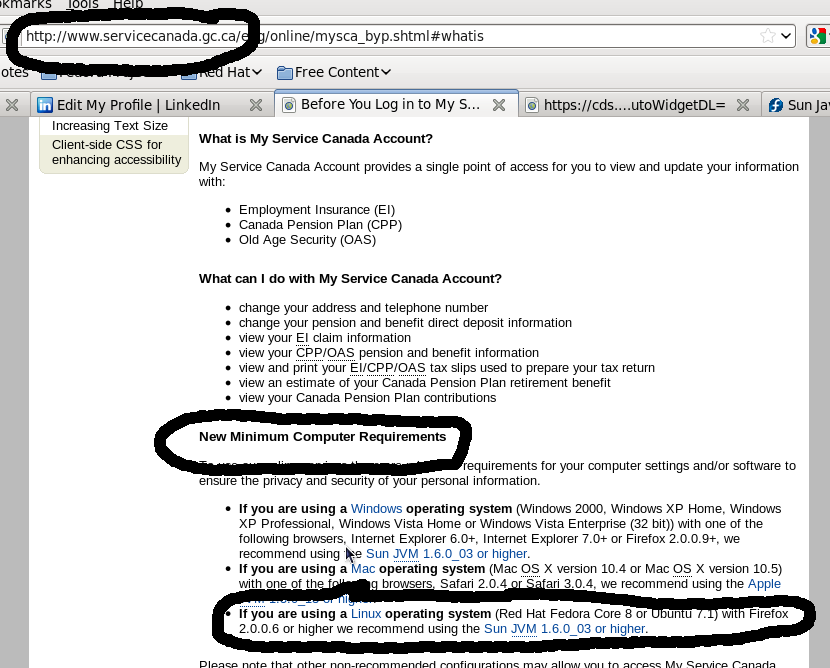I’m trying to convince a certain group to wipe their virus infected (and no doubt with trojan horses, key loggers, and spyware) computer over to linux, and so I’ve burned the Fedora 12 Live CD and the Ubuntu 9.10 Live CD.
I don’t want to bother giving them the Fedora Live CD. The Ubuntu CD is far too slick. And, the Fedora Live CD is far too vanilla. And that’s despite my usual rivalry with Ubuntu; at first glance, the killer is the inclusion of OpenOffice.org on the Ubuntu CD, while Fedora has the lightweight (albeit otherwise capable) AbiWord. Even the brown looks bright and welcoming, as opposed to Fedora’s more conservative, dull greyish-blue.
Add to that the directory of various files introducing Ubuntu, what it’s about, and even a sample mortgage calculator, and it’s little wonder that Ubuntu gets a whole lot of first timers straight out of the gate, or that first timers settle on Ubuntu after trying a bunch of other distros. As a marketing tool (at least for the desktop), the Ubuntu CD wins hands down; I’m not even sure that fully set up via traditional means from the DVD or full set of CD’s Fedora is this flashy.
I’ve been telling people for a while that “I use Fedora, but you’ll find Ubuntu easier”. I’ve just seen the proof. Seeing the CD, I would want to start afresh with it. I won’t of course, but I was impressed.
I’m wondering, though, which is the real killer — the inclusion of OpenOffice.org, or the directory introducing Ubuntu? I bet that were Fedora to mount a similar directory, including how to expand upon the base supplied on the CD, that people might take it up a bit more. I’m thinking of things like “Accustomed to OpenOffice.org? Go here and this is what you do.” or a “top five” “what to do once you install the Fedora base (or even just the Live-CD)” based on “Common desktop tasks”, “Setting up a home file and media server”, or the usual choices found in the standard anaconda setup.
I’m even thinking that the Ubuntu Live CD is productive — and “complete” — right away with its little directory, forget having little tutorials.
I guess that I should find out about whether or not Fedora does something like this, though … 🙂

